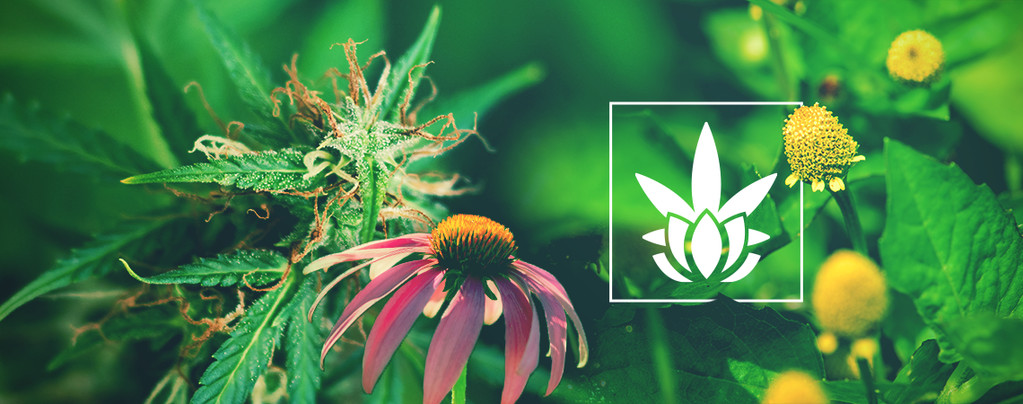
Cannabinoids Are Not Unique To Cannabis
If you thought cannabinoids were exclusive to cannabis, think again! There are many plant species that contain cannabinoids, terpenes, and cannabimimetics. With cannabinoid-based treatments increasing in number and scope, understanding where alternative sources can be found is vitally important. Continue reading to find out more.
Cannabis remains at the forefront of cannabinoid-based treatments because of its abundance of these unique compounds. Cannabinoids interact with our body’s endocannabinoid system (ECS) to produce a wide range of effects. The mind-melting, hunger-inducing high associated with THC or the calming and therapeutic capabilities of CBD are just two examples. In fact, over a hundred different cannabinoids exist, and although we only know how a select few work, each one appears to have unique capabilities.
CANNABINOIDS DON’T JUST EXIST INSIDE CANNABIS
Thankfully, there are several other plants and substances that not only contain cannabinoids, but other compounds that act in the same way as cannabinoids, interacting with our ECS as a result. You may be surprised to learn that these compounds can be found in the kitchen cupboard or growing naturally in your garden. The importance of alternative sources of cannabinoids is significant. Not only are cannabinoids becoming a regular addition to specific treatment programmes, but they could also help tackle the phenomenon of clinical endocannabinoid deficiency (CECD).
THE IMPORTANCE OF ALTERNATIVE SOURCES OF CANNABINOIDS
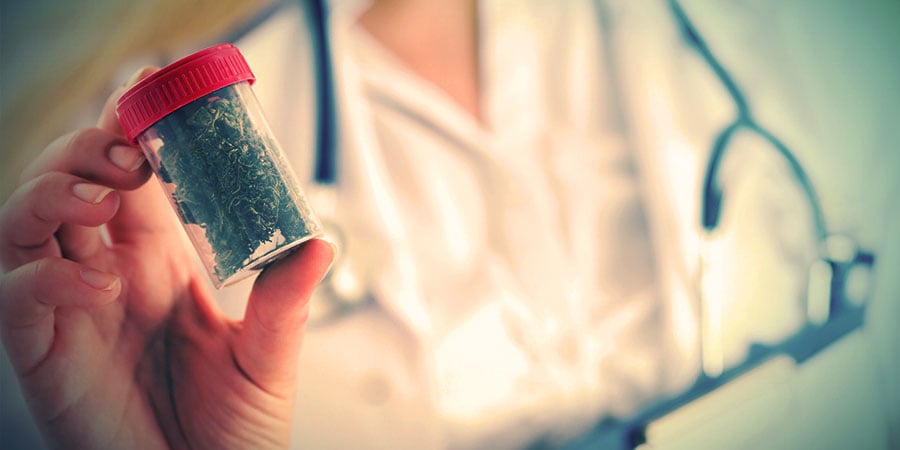
Although cannabis has the highest concentration of cannabinoids, especially when compared to other plants, it is not the easiest to get hold of. Opinions on cannabis remain divided, but for the most part, it is still illegal to grow and harvest throughout most of the modern world. Cannabinoid-based research is equally difficult to conduct given the illicit nature of cannabis, and this is a severe blocker to the advancement of cannabinoid-based treatments.
The importance of cannabinoid studies is twofold. Firstly, cannabinoids are considered a novel treatment option for cancer, Parkinson's, Crohn's disease, IBS, arthritis, depression, and more. With many of these treatments expressing less-severe side effects compared to some pharmaceutical options, the desire for an all-natural approach is increasing.
Secondly, there is a belief that many chronic conditions may be linked to a deficiency in the body’s ability to produce endocannabinoids. If proven to be accurate, clinical endocannabinoid deficiency could be tackled through supplementation with external cannabinoids. The phytocannabinoids found within cannabis and other plants make ideal candidates for this course of action.
THESE PLANTS ALL STIMULATE THE ECS
Some may be more difficult to get hold of than others, but for the most part, all of these plants or substances are legal. Moreover, they all contain compounds that can interact with the ECS in some way.
IN THE KITCHEN CUPBOARD
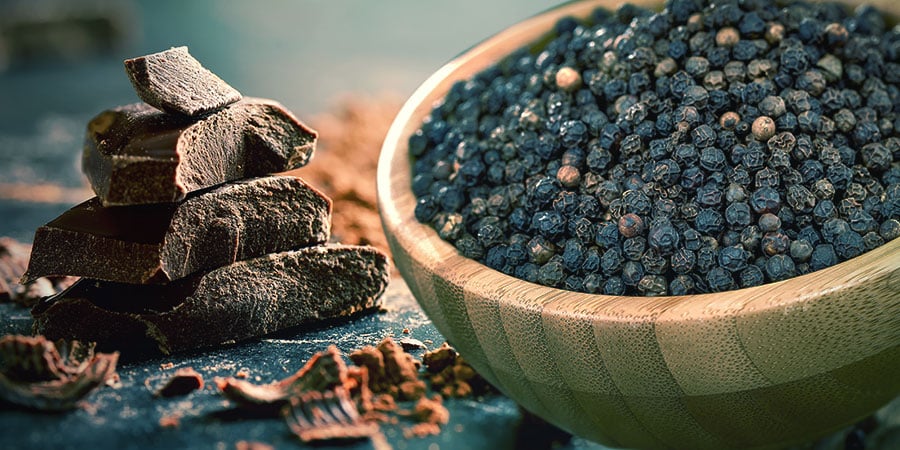
Chocolate (Theobroma cacao)
How many times does a tough day at work have you reaching for the nearest chocolate bar? Turns out the soothing and calming effect exhibited by chocolate (specifically dark chocolate) is not just an old wives tale. A study conducted in 1996 found that chocolate “might contain lipids chemically and pharmacologically related to anandamide”. Anandamide is an endocannabinoid commonly referred to as the “bliss molecule” due to the natural high it provides. There is also evidence to support the idea that other compounds within cacao interact with the enzyme FAAH.
Fatty acid amide hydrolase is produced by the body to counteract a buildup of anandamide. By blocking the production of FAAH, and therefore limiting the breakdown of anandamide, we can enjoy the natural high provided by chocolate.
Black pepper (Piper nigrum)
Dig a little deeper into the kitchen cupboard, and we find another substance that can interact with the ECS. Now technically black pepper doesn’t contain cannabinoids, but it does contain the terpene beta-caryophyllene (BCP). Terpenes are the compounds that give cannabis and many other plants their aroma. Terpenes have also been found to have therapeutic benefits of their own.
Beta-caryophyllene, for example, has potential anti-inflammatory properties through its binding with CB2 receptors. Other terpenes, like myrcene, also display the ability to produce sedative effects when studied in rat models.
IN THE GARDEN
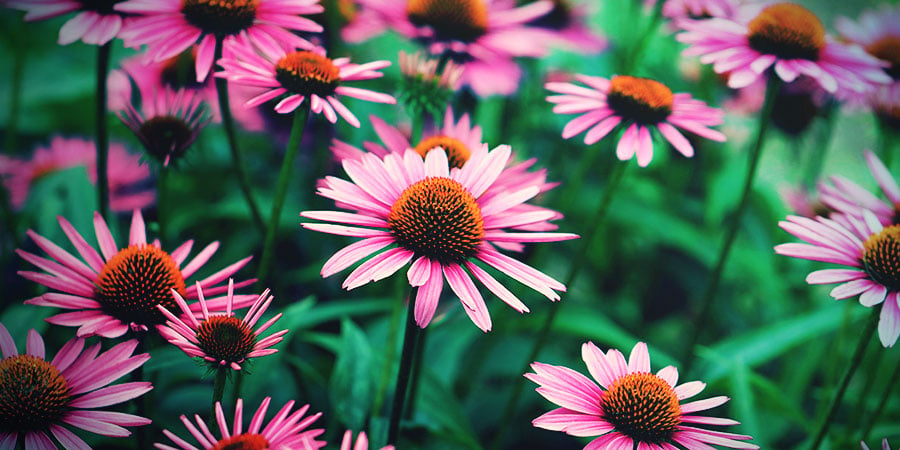
Coneflower (Echinacea)
Commonly found in gardens, flower beds, and on windowsills, Echinacea is usually grown for its highly attractive flowers. However, put coneflower under a microscope, and the plant exhibits an entirely different set of skills—within coneflowers are compounds called cannabimimetics.
Cannabimimetics are not the same as cannabinoids on a molecular level, but they do provoke a similar reaction from our endocannabinoid system. Echinacea has been used for centuries as a remedy for the common cold and fatigue. Part of its effectiveness is believed to be in how it helps regulate our immune and inflammatory systems.
IN THE WILD
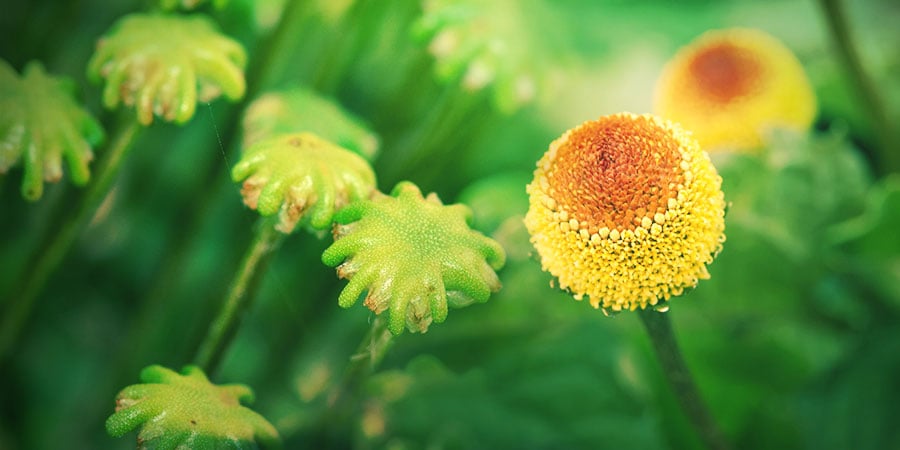
Liverwort (Radula marginata)
Liverwort is unique because when consumed, it produces effects similar to THC (albeit a lot milder). This, however, is not the result of THC itself, but a similar compound called perrottetinene. It is believed that perrottetinene binds to CB1 receptors in the same way as THC, but liverwort has one distinct advantage—it is still legal, at least for the moment.
Electric daisy (Acmella oleracea)
Toothache has affected us all at some point. Before the arrival of modern medicine, people had to turn to holistic methods to get some respite from the pain. Electric daisy was favoured because when chewed, it provides a numbing sensation.
Cambridge University has since studied the plant and found that it contains a compound called N-isobutylamides. It is thought that this compound binds with CB2 receptors to help regulate pain and inflammation. There is hope that by harnessing the abilities of the electric daisy, it can be used as a natural alternative to synthetic painkillers.
THERE ARE MORE PLANTS OUT THERE
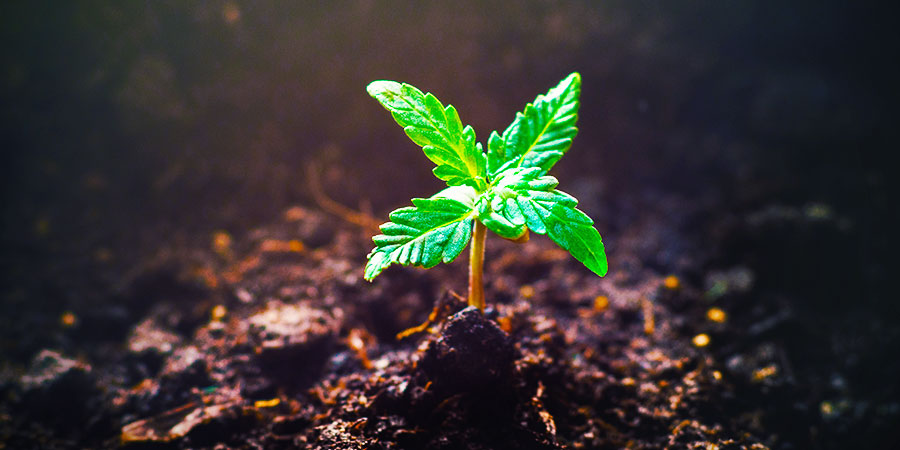
The plants listed above represent a snapshot of other species containing cannabinoids or compounds similar to. As our understanding of cannabinoids grows, so too does the importance of having alternative sources. When you consider that some of these plants have compounds that act just like cannabinoids, understanding exactly how they work, and where they can be found, is essential for the future of cannabinoid-based treatments. If we can mimic and harness the abilities of cannabimimetics, who knows what future remedies may be possible!
- (n.d.). - https://www.sacredchocolate.com
- (n.d.). Beta-caryophyllene is a dietary cannabinoid | PNAS - https://www.pnas.org
- (n.d.). - https://www.cam.ac.uk
- do Vale TG, Furtado EC, Santos JG, & Viana GS. (2002 Dec). Central effects of citral, myrcene and limonene, constituents of essential oil chemotypes from Lippia alba (Mill.) n.e. Brown. - PubMed - NCBI - https://www.ncbi.nlm.nih.gov




 Seedshop
Seedshop Headshop
Headshop Vaporshop
Vaporshop Healthshop
Healthshop Smartshop
Smartshop Shroomshop
Shroomshop Plantshop
Plantshop United States
United States













